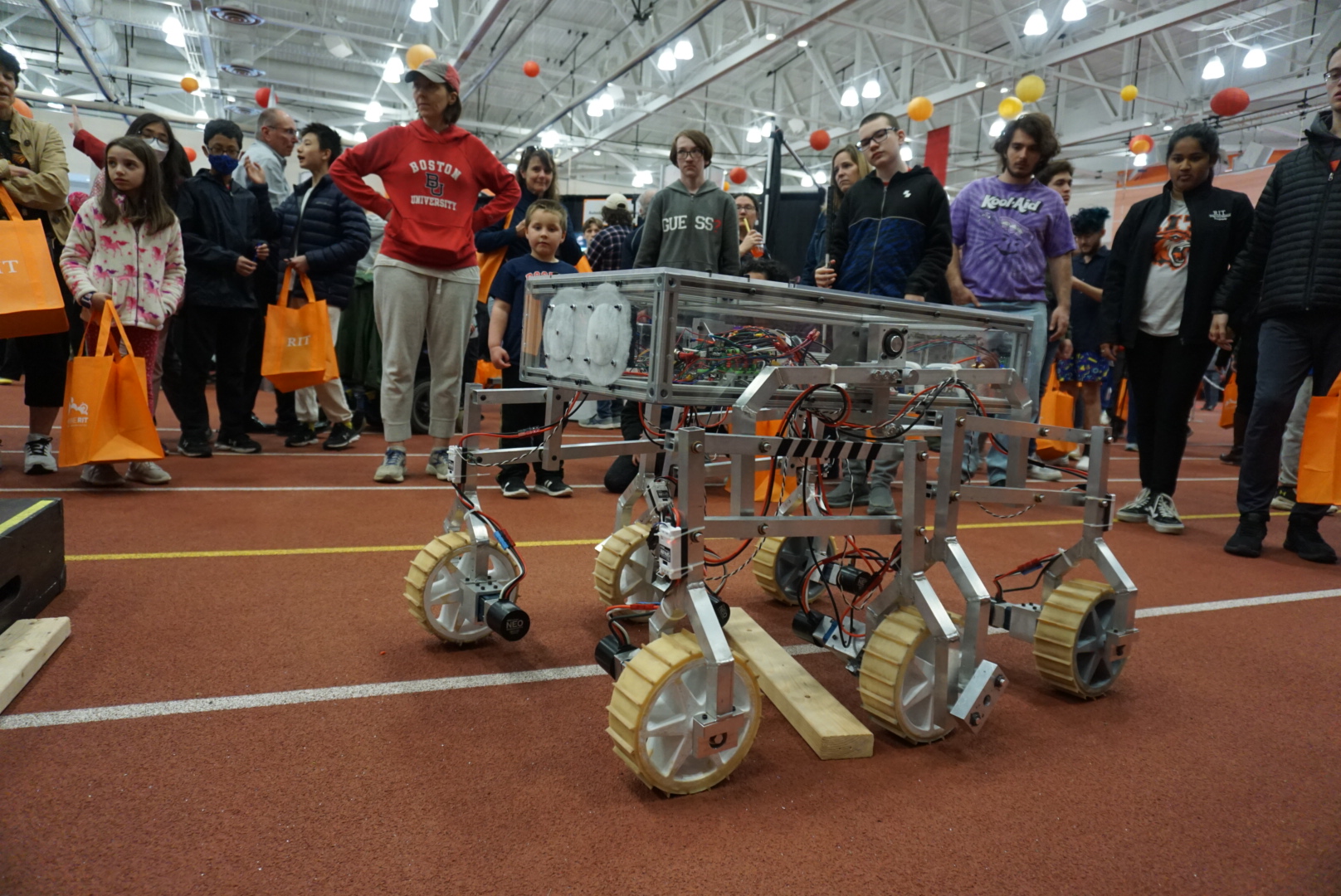Projects

Why do we do projects?
RIT Space Exploration (SPEX) has a rich history of projects. Every year SPEX launches a high altitude balloon with an scientific payload. This has included deployable solar panels, computer vision and light in the sky (LIS) missions. SPEX has built cold gas thrusters and arc-jet propulsion systems. One of the earliest SPEX projects was an optical laser communication array as well as radio and visual tracking for out high altitude balloons. Projects are what sets us apart from other groups on campus.
Past and present projects
Rovers
Rover’s Mission Statement: The Rovers team focuses on designing and building a rover to compete in the Mars Society University Rover Challenge. Each semester builds on the last in completing mechanical, electrical, scientific, and software systems on the rover. Rovers values the input of all its members and gives everyone the opportunity to complete research, design, and manufacturing as they are interested.
SPEX will begin the design and construction of our second rover. The project is set to run for two semesters with the team looking to compete this upcoming summer in the University Rover Competition hosted by the Mars Society. Rovers and by extension, robotics are an area of space exploration recently new to RIT SPEX. The rover is set to include a rocker-bogie suspension mechanism alongside the required motors, piloting equipment, power regulation, and communications systems.
The rover is set to be a platform which can be improved with features like Lidar based CV for autonomous navigation, soil analysis equipment, a robotic arm, solar cells, or more. There are eight active missions on Mars. Four of those include rovers. The Rovers team is excited to get some experience in this area. This is also an opportunity for SPEX to get involved with faculty research as robotics and computer visions are areas of present at RIT.
Astrodynamics
Astrodynamics Mission Statement: Astrodynamics explores everything from observational astronomy, to tracking low earth orbit (LEO) objects and modifying observational equipment. With our six observational telescopes, SPEX Astrodynamics members will be able to explore observational Astronomy and astrophotography. Astrodynamics will also continue to build and explore radio telescopes. Anyone with a passion for space and future Astrodynamics project ideas is encouraged to reach out and join SPEX Astrodynamics!
The astrodynamics team is responsible for developing the expertise and techniques for tracking fast moving Low-Earth Orbit(LEO) objects. We use optical telescopes to record LEO object orbital elements then use that data with Orbital Simulation software to model their orbits over time.
This year, SPEX will be assisting the RIT observatory with some improvements and repairs to the hardware there. The observatory has two domes, yet one is not very widely used because of the system to remove the roof. SPEX will repair and adjust this motor to fix this issue. the secondary dome also requires a latch arm to be repaired for safety reasons. SPEX will do this work as well. Finally, the faculty have requested small modifications to the 12” Meade telescope that would greatly improve the convenience and quality of observing. SPEX will help with this as well.
Learn more about Astrodynamics here.
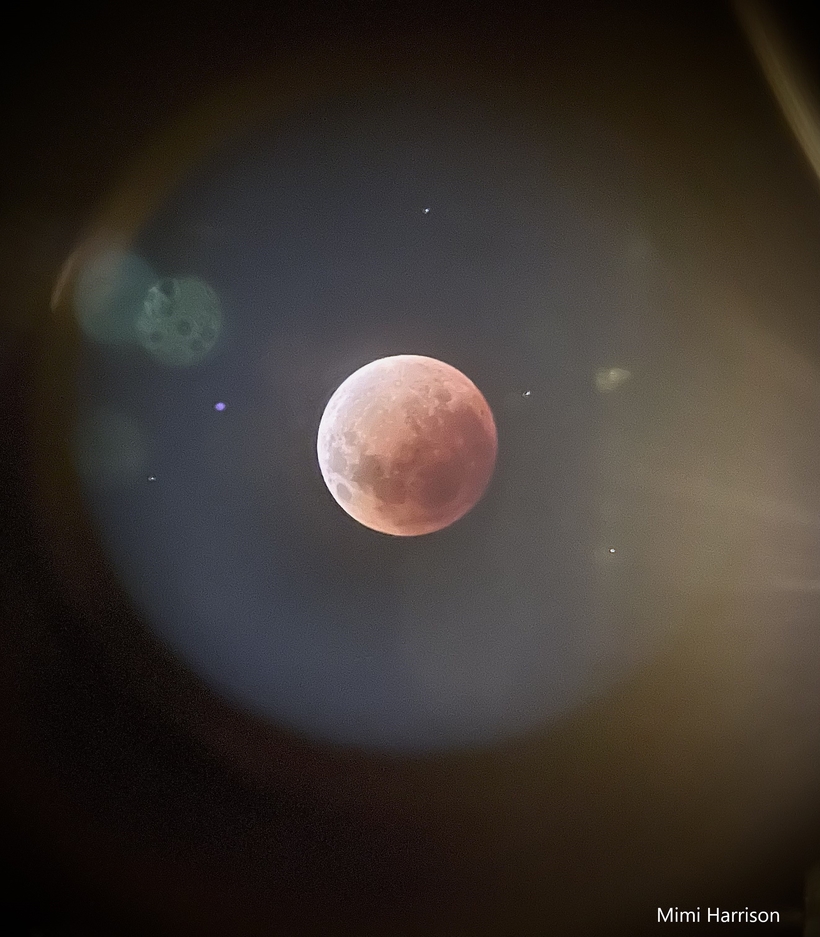
Photo taken by one of our members.
CubeSat
CubeSat Mission Statment: RITs Cubesat team works on developing, testing, and launching RITs first student-made satellite. The team focuses on developing and assembling a scientific payload, building the satellite's structure, electronic components, and communication systems. Students from all majors and programs are welcome on the team, but the projects primarily involve electrical and mechanical engineering, computer science, and programming. The team's main focus this fall will be on assembling and implementing their payload onto a Flat-Sat which will be launched aboard a BluShift rocket at the beginning of 2023 as part of a competition.
The SPEX Cubesat team is currently designing a payload to be launched by bluShift Aerospace in 2023. The payload is an experiment to test radiation shielding against solar winds. Given radiation shielding is needed for both persons and electronics, the Cubesat team hopes this work can help further space exploration.
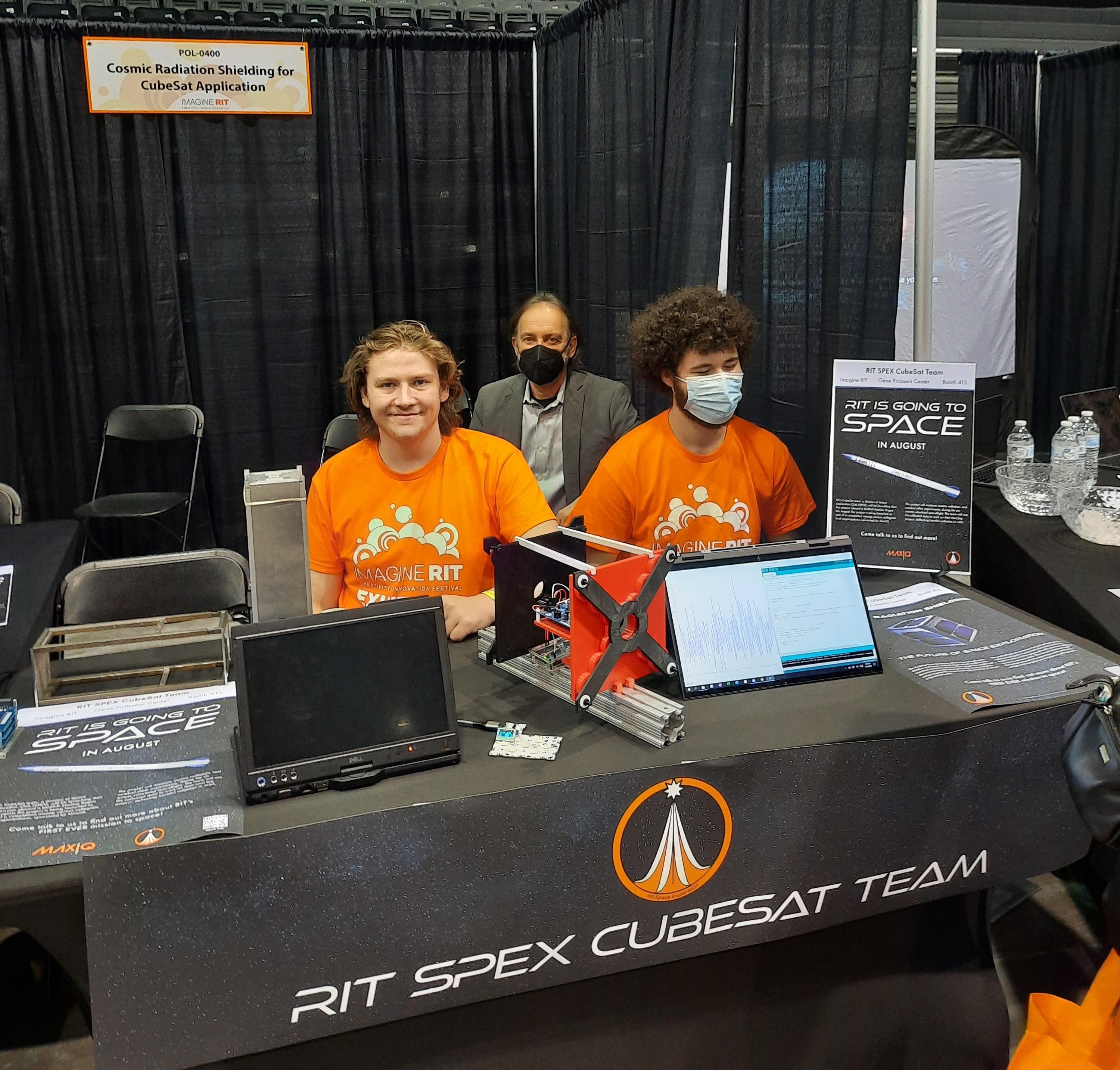
Virtual Reality
Virtual Reality Mission Statment: The SPEX VR team is dedicated to creating interactive VR experiences involving space! Last semester we demoed a planetarium in VR and are looking forward to extending the knowledge gained regarding sky spheres, orbital mechanics, lighting, gravity, etc., in the Unreal Engine for our next experience. We will be utilizing the newly released Unreal Engine 5 to test and develop our ideas. We are excited to continue testing the limits of what is possible in VR!
High Altitude Balloon
A quick-to-develop testbed
The SPEX High Altitude Balloon (HAB) project/group allows for a unique opportunity to conduct experiments in a near space-like environment. HABs typically reach an attitude of approximately 30,000 meters (about 100,000 feet). SPEX HAB has launched four previous balloons, designated as HAB 1, HAB 2, HAB 3, and HAB 4.
Learn more about HAB here.
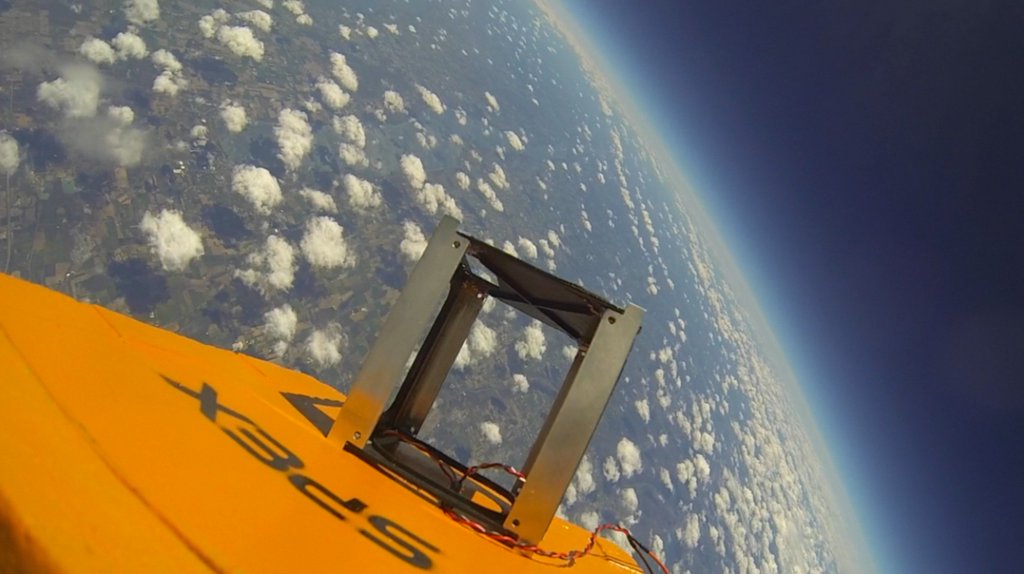
Image of HAB 2 launch before camera failure at an estimated 18,500m.
IREC-Intercollegiate Rocket Engineering Competition (past project)
Every year Spaceport America host the Intercollegiate Rocket and Engineering Competition or IREC. Teams for colleges from across the country meet to compete in these events. The SA Cup takes place in Las Cruces, NM. RIT SPEX will be partners with RIT Launch Initiative to deliver our entry into the competition. SPEX has taken place in one IREC previously, in 2018. Launch Initiative will build the rocket, SPEX will provide the payload. Our goal is to design and build a scientific payload to compete in the intercollegiate rocket engineering competition.
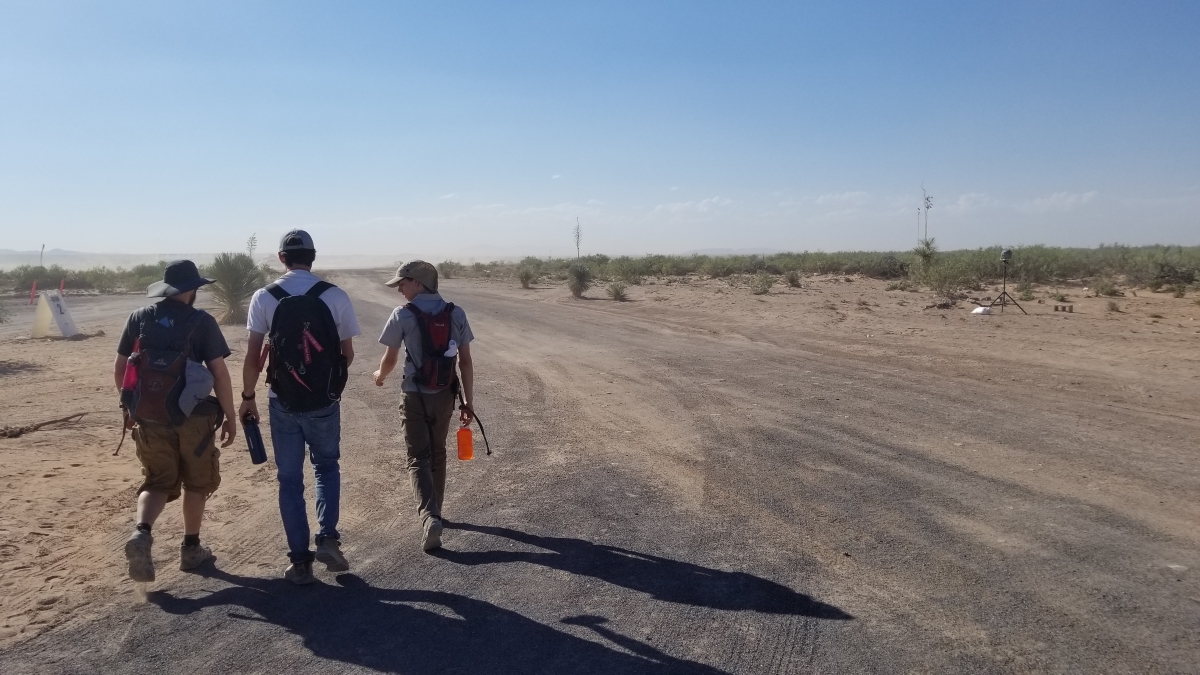
The team searching for Hyperion payload in 2018.
SPEX will be participating in the SDL Payload Challenge at the Spaceport America Cup 2019. A 3U CubeSat-like payload featuring a protein spectroscopy experiment will be launched and recovered. The payload is dubbed Spectroscopy Protein EXperiment Through Reaction Observation (SPEXTRO). The Space Dynamics Laboratory (SDL) payload challenge 2019 is held at the Intercollegiate Rocket Engineering Competition (IREC) in Las Cruces, New Mexico. The SDL payload challenge is a sub competition at IREC designed to encourage participants to create payloads that accomplish a relevant function and provide useful learning opportunities. The goal of the payload experiment is to test how high acceleration and zero net acceleration (free-fall) affects the folding of proteins.
Environmental Test Chamber (past project)
SPEX will be building an environmental test chamber (ETC) that will be able to test temperatures between -20°C to 50°C and will be capable to reduce pressure by 1 Atmosphere. This ETC will be able to help with testing objects in space like environments. This will allow for risk reduction with projects like HAB and IREC, as well as provide opportunities to replicate industry-standard testing on space-like designs.
Rocket Nozzle Analysis and Design (past project)
The Rocket Nozzle Analysis and Design team designs, fabricates and tests various nozzles for the purpose of education and integration with other SPEX projects in the future. The team measures the thrust and perform data analysis to compare experimental results to computational results.
The team prepares to test 3-D printed nozzles for data collection.
